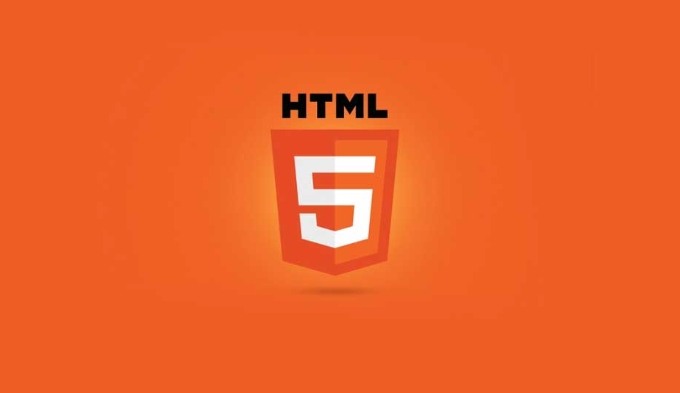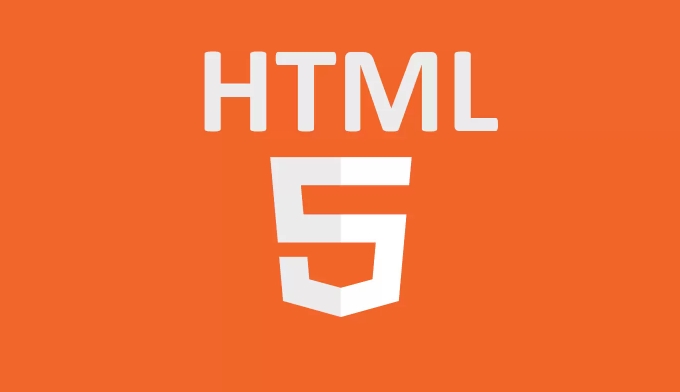Using the HTML5 `` element for reusable content.
Jul 08, 2025 am 01:48 AMThe <template> element is a native tool in HTML5 for storing unreleased HTML fragments. It can be reused efficiently after cloning through JavaScript. 1. Get template nodes; 2. Cloning content; 3. Filling data; 4. Inserting page. When using it, you need to pay attention to: the content and styles must be accessed through cloning, and must be defined separately and compatible with modern browsers. Suitable scenarios include dynamic lists, pop-up components, table rows and other duplicate structures.

If you often repeat similar HTML structures when developing web pages, or want to manage dynamic content more efficiently, the <template></template> element of HTML5 is a tool worth mastering. It itself does not render to the page, but can store HTML snippets as templates, which are cloned and inserted into the DOM in JavaScript.
 ` element for reusable content." />
` element for reusable content." /> What is a <template></template> element?
<template></template> is a native element provided by HTML5, specially used to store content that will not be rendered immediately. The browser parses the contents in it, but it won't display it. Only through JavaScript operations can the structure inside be "activated" and inserted into the page.
Its biggest advantage is:
 ` element for reusable content." />
` element for reusable content." />- Semantic clear : It is clear that this part is the template content
- Performance-friendly : The content is only parsed once, and can be reused multiple times in the future.
- Avoid duplicate requests : no need to load templates through AJAX
<template id="user-card">
<div class="card">
<h3></h3>
<p>Email: </p>
</div>
</template> How to create reusable components using <template> ?
To truly utilize the capabilities of <template> , you need to cooperate with JavaScript to operate the DOM. The basic process is as follows:
- Get template node
- Clone the template content
- Fill in data
- Insert into the page
A simple example:
 ` element for reusable content." />
` element for reusable content." />const template = document.getElementById('user-card'); const clone = template.content.cloneNode(true); clone.querySelector('h3').textContent = 'Alice'; clone.querySelector('p').textContent = 'Email: alice@example.com'; document.body.appendChild(clone);
You can encapsulate this process into a function to facilitate repeated calls. For example:
function renderUserCard(name, email) {
const template = document.getElementById('user-card');
const clone = template.content.cloneNode(true);
clone.querySelector('h3').textContent = name;
clone.querySelector('p').textContent = `Email: ${email}`;
return clone;
} Notes on using <template></template>
Although <template></template> is simple and easy to use, there are some details that need to be paid attention to:
- No direct access to elements in the template : the content must be cloned before operation
- Style problem : The template content does not participate in the layout, the style may need to be defined separately
- Good compatibility : modern browsers support it, but pay attention to the old version of IE (of course few people are in charge now)
Some common mistakes include:
- Forgot to set
idand cause the template to be retrieved - Not using
cloneNode(true)leads to modifying the original content - When the template structure is complex, there is no reasonable organization of class names or structures, which leads to difficulty in maintaining
Where is the most practical to use <template></template> ?
Here are some suitable scenarios for using <template></template> :
- Dynamic list items (such as comments, user lists)
- UI components such as pop-up windows, prompt boxes, etc.
- Repeat structure in table rows and card layouts
- Placeholder before initializing data display
For example, if you have a to-do list, you have to generate the same HTML structure for each item added, you can predefined the structure with <template></template> and then dynamically populate the content.
Basically that's it. Using <template></template> is not complicated, but it can effectively improve the maintainability and execution efficiency of the code, especially when there is no need to introduce a framework.
The above is the detailed content of Using the HTML5 `` element for reusable content.. For more information, please follow other related articles on the PHP Chinese website!

Hot AI Tools

Undress AI Tool
Undress images for free

Undresser.AI Undress
AI-powered app for creating realistic nude photos

AI Clothes Remover
Online AI tool for removing clothes from photos.

Clothoff.io
AI clothes remover

Video Face Swap
Swap faces in any video effortlessly with our completely free AI face swap tool!

Hot Article

Hot Tools

Notepad++7.3.1
Easy-to-use and free code editor

SublimeText3 Chinese version
Chinese version, very easy to use

Zend Studio 13.0.1
Powerful PHP integrated development environment

Dreamweaver CS6
Visual web development tools

SublimeText3 Mac version
God-level code editing software (SublimeText3)

Hot Topics
 What Does H5 Refer To? Exploring the Context
Apr 12, 2025 am 12:03 AM
What Does H5 Refer To? Exploring the Context
Apr 12, 2025 am 12:03 AM
H5referstoHTML5,apivotaltechnologyinwebdevelopment.1)HTML5introducesnewelementsandAPIsforrich,dynamicwebapplications.2)Itsupportsmultimediawithoutplugins,enhancinguserexperienceacrossdevices.3)SemanticelementsimprovecontentstructureandSEO.4)H5'srespo
 Is H5 a Shorthand for HTML5? Exploring the Details
Apr 14, 2025 am 12:05 AM
Is H5 a Shorthand for HTML5? Exploring the Details
Apr 14, 2025 am 12:05 AM
H5 is not just the abbreviation of HTML5, it represents a wider modern web development technology ecosystem: 1. H5 includes HTML5, CSS3, JavaScript and related APIs and technologies; 2. It provides a richer, interactive and smooth user experience, and can run seamlessly on multiple devices; 3. Using the H5 technology stack, you can create responsive web pages and complex interactive functions.
 H5 and HTML5: Commonly Used Terms in Web Development
Apr 13, 2025 am 12:01 AM
H5 and HTML5: Commonly Used Terms in Web Development
Apr 13, 2025 am 12:01 AM
H5 and HTML5 refer to the same thing, namely HTML5. HTML5 is the fifth version of HTML, bringing new features such as semantic tags, multimedia support, canvas and graphics, offline storage and local storage, improving the expressiveness and interactivity of web pages.
 Understanding H5 Code: The Fundamentals of HTML5
Apr 17, 2025 am 12:08 AM
Understanding H5 Code: The Fundamentals of HTML5
Apr 17, 2025 am 12:08 AM
HTML5 is a key technology for building modern web pages, providing many new elements and features. 1. HTML5 introduces semantic elements such as, , etc., which enhances web page structure and SEO. 2. Support multimedia elements and embed media without plug-ins. 3. Forms enhance new input types and verification properties, simplifying the verification process. 4. Offer offline and local storage functions to improve web page performance and user experience.
 HTML5: The Building Blocks of the Modern Web (H5)
Apr 21, 2025 am 12:05 AM
HTML5: The Building Blocks of the Modern Web (H5)
Apr 21, 2025 am 12:05 AM
HTML5 is the latest version of the Hypertext Markup Language, standardized by W3C. HTML5 introduces new semantic tags, multimedia support and form enhancements, improving web structure, user experience and SEO effects. HTML5 introduces new semantic tags, such as, ,, etc., to make the web page structure clearer and the SEO effect better. HTML5 supports multimedia elements and no third-party plug-ins are required, improving user experience and loading speed. HTML5 enhances form functions and introduces new input types such as, etc., which improves user experience and form verification efficiency.
 HTML5: The Standard and its Impact on Web Development
Apr 27, 2025 am 12:12 AM
HTML5: The Standard and its Impact on Web Development
Apr 27, 2025 am 12:12 AM
The core features of HTML5 include semantic tags, multimedia support, offline storage and local storage, and form enhancement. 1. Semantic tags such as, etc. to improve code readability and SEO effect. 2. Simplify multimedia embedding with labels. 3. Offline storage and local storage such as ApplicationCache and LocalStorage support network-free operation and data storage. 4. Form enhancement introduces new input types and verification properties to simplify processing and verification.
 HTML5 and H5: Understanding the Common Usage
Apr 22, 2025 am 12:01 AM
HTML5 and H5: Understanding the Common Usage
Apr 22, 2025 am 12:01 AM
There is no difference between HTML5 and H5, which is the abbreviation of HTML5. 1.HTML5 is the fifth version of HTML, which enhances the multimedia and interactive functions of web pages. 2.H5 is often used to refer to HTML5-based mobile web pages or applications, and is suitable for various mobile devices.
 The Connection Between H5 and HTML5: Similarities and Differences
Apr 24, 2025 am 12:01 AM
The Connection Between H5 and HTML5: Similarities and Differences
Apr 24, 2025 am 12:01 AM
H5 and HTML5 are different concepts: HTML5 is a version of HTML, containing new elements and APIs; H5 is a mobile application development framework based on HTML5. HTML5 parses and renders code through the browser, while H5 applications need to run containers and interact with native code through JavaScript.






